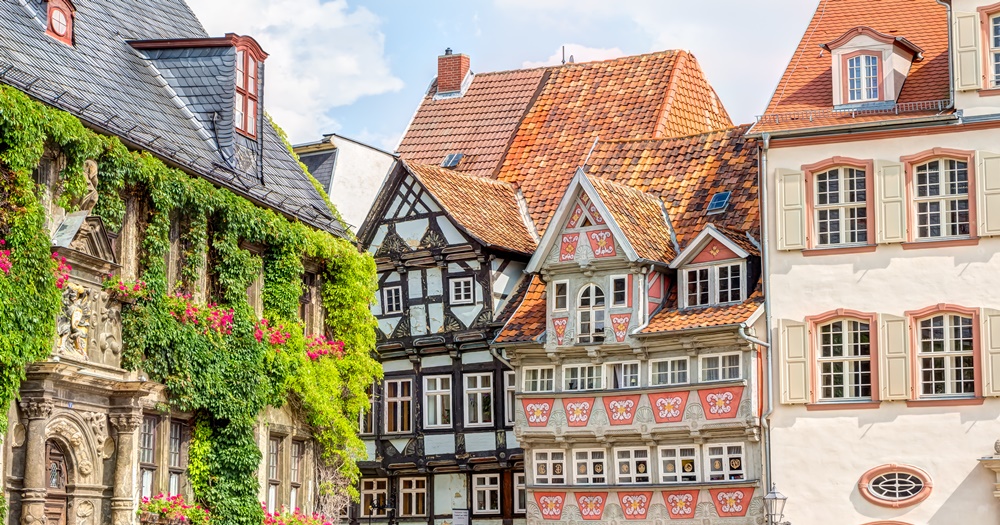Experience dazzling highlights
It is undeniable that the whole of Germany is shaped by its history. However, it is not only the big cities where historical sights are to be discovered. In every corner of Germany hides a little bit of German history and tradition. Let yourself be enchanted and discover with us the smaller, perhaps rather unknown cities of Germany.
The half-timber champion, world heritage site, living museum Quedlinburg
The former royal palatinate and Hanseatic city on the northeastern edge of the Harz Mountains looks back on a history of over 1,000 years. The greatest treasure of the small town in Saxony-Anhalt is more than 2,000 well-preserved half-timbered buildings from the 14th to 19th centuries. Half-timbered houses typically have structural skeletons of wood and walls made of clay. Their colorful facades, crooked gables, wooden beams and ornaments shape the small town with their charm. In fact, you won’t find more half-timbered house power anywhere else in Germany!

Regensburg, the origin of the post office
The princely Thurn and Taxis Palace is located at the southern end of Regensburg’s old town. The Thurn and Taxis dynasty wielded great influence for a long time: they are also considered to be the inventors of the postal service. Starting in 1490, Francesco de Tasso introduced the European postal system on behalf of the emperor, and the von Taxis held the courier monopoly until Prussia took over the postal rights in 1867. Today the Thurn and Taxis family organizes events such as summer concerts and a Christmas market at Emmeram Palace.

Trier – one of the oldest cities in Germany
Roman emperors and later bishops, electors, and citizens have made Trier what it is today; a whole series of world-class monuments – many of them part of UNESCO World Heritage. Multiple artistic treasures have been preserved and tell of Trier´s eventful history. The Porta Nigra, the Amphitheatre, and the famous Imperial Baths bear witness to the spacious layout of the city in ancient times. Medieval buildings, such as St. Peter’s Cathedral – the oldest church in Germany – and the early-Gothic Church of Our Lady are also very impressive.

Würzburg – a pleasant harmony of history, culture and wine
Würzburg considered a baroque city with a southern flair surrounded by vineyards, stands for Franconian coziness. Masterpieces of architecture from different eras characterize its image. Even from afar, the two soaring towers of St. Kilian’s Cathedral, the fourth largest Romanesque church building in Germany, point the way to the city. Würzburg’s famous landmarks are the Würzburg Residence, with its Court Gardens and Residence Square, and the 180-meter-long Old Main Bridge, which is lined with impressive statues of saints. In the summertime, the bridge is the perfect place to taste Franconian wine.
